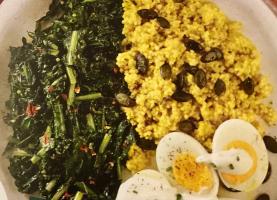Copy Link
Add to Bookmark
Report
dictyNews Volume 43 Number 20

dictyNews
Electronic Edition
Volume 43, number 20
August 25, 2017
Please submit abstracts of your papers as soon as they have been
accepted for publication by sending them to dicty@northwestern.edu
or by using the form at
http://dictybase.org/db/cgi-bin/dictyBase/abstract_submit.
Back issues of dictyNews, the Dicty Reference database and other
useful information is available at dictyBase - http://dictybase.org.
Follow dictyBase on twitter:
http://twitter.com/dictybase
=========
Abstracts
=========
Biological activities of novel derivatives of differentiation-inducing
factor 3 from Dictyostelium discoideum
Katsunori Takahashi,a Haruhisa Kikuchi,*,b Van Hai Nguyen,b
Yoshiteru Oshima,b Hirotaka Ishigaki,a Junko Nakajima-Shimada,c
and Yuzuru Kubohara, *,d
a Department of Medical Technology, Faculty of Health Science,
Gunma Paz College; Takasaki 370-0006, Japan
b Laboratory of Natural Product Chemistry, Graduate School of
Pharmaceutical Sciences, Tohoku University; Sendai 980-8578, Japan
c Department of Basic Sciences for Medicine, Graduate School of
Health Sciences, Gunma University; Maebashi 371-8514, Japan
d Laboratory of Health and Life Science, Graduate School of Heath
and Sports Science, Juntendo University; Inzai, Chiba 270-1695, Japan
Biological & Pharmaceutical Bulletin, in press.
Abstract
Differentiation-inducing factor-3 (DIF-3; 1-(3-chloro-2,6-dihydroxy-4-
methoxyphenyl)hexan-1-one), which is found in the cellular slime mold
Dictyostelium discoideum, is a potential candidate compound for the
development of new medicines; DIF-3 and its derivatives possess several
beneficial biological activities, including anti-tumor, anti-Trypanosoma
cruzi, and immunoregulatory effects. To assess the relationship between
the biological activities of DIF-3 and its chemical structure,
particularly in regard to its alkoxy group and the length of the alkyl
chains at the acyl group, we synthesized two derivatives of DIF-3,
DIF-3(+3) and Hex-DIF-3, and investigated their biological activities
in vitro. At micro-molar levels, DIF-3(+3) and Hex-DIF-3 exhibited strong
anti-proliferative effects in tumor cell cultures, but their anti-T. cruzi
activities at 1 microM in vitro were not as strong as those of other known
DIF derivatives. In addition, Hex-DIF-3 at 5 microM significantly
suppressed mitogen-induced interleukin-2 production in vitro in Jurkat T
cells. These results suggest that DIF-3(+3) and Hex-DIF-3 are promising
leads for the development of anti-cancer and immunosuppressive agents.
submitted by: Yuzuru Kubohara [ykuboha@juntendo.ac.jp]
————————————————————————————————————————
Actin assembly mechanisms at a glance
Klemens Rottner 1,2, Jan Faix 3, Sven Bogdan 4, Stefan Linder 5 and Eugen
Kerkhoff 6
1 Division of Molecular Cell Biology, Zoological Institute, Technische
Universität Braunschweig, 38106 Braunschweig, Germany; 2 Department of
Cell Biology, Helmholtz Centre for Infection Research, 38124 Braunschweig,
Germany; 3 Institute for Biophysical Chemistry, Hannover Medical School,
30625 Hannover, Germany; 4 Institute for Physiology and Pathophysiology,
Department of Molecular Cell Physiology, Philipps-University of Marburg,
35032 Marburg, Germany; 5 Institute for Medical Microbiology, Virology and
Hygiene, University Medical Center Eppendorf, 20246 Hamburg, Germany;
6 Department of Neurology, University Hospital Regensburg, 93053 Regensburg,
Germany.
J. Cell Sci., in press
The actin cytoskeleton and associated motor proteins provide the driving
forces for establishing the astonishing morphological diversity and dynamics
of mammalian cells. Aside from functions in protruding and contracting cell
membranes for motility, differentiation or cell division, the actin
cytoskeleton provides forces to shape and move intracellular membranes of
organelles and vesicles. To establish the many different actin assembly
functions required in time and space, actin nucleators are targeted to
specific subcellular compartments, thereby restricting the generation of
specific actin filament structures to those sites. Recent research has
revealed a highly coordinated targeting and activation of actin filament
nucleators, elongators and myosin motors by conserved protein complexes,
in order to orchestrate force generation. In this Cell Science at a Glance
article and the accompanying poster, we summarize and discuss the current
knowledge on the corresponding protein complexes and their modes of action
in actin nucleation, elongation and force generation.
submitted by: Jan Faix [faix.jan@mh-hannover.de]
==============================================================
[End dictyNews, volume 43, number 20]





















